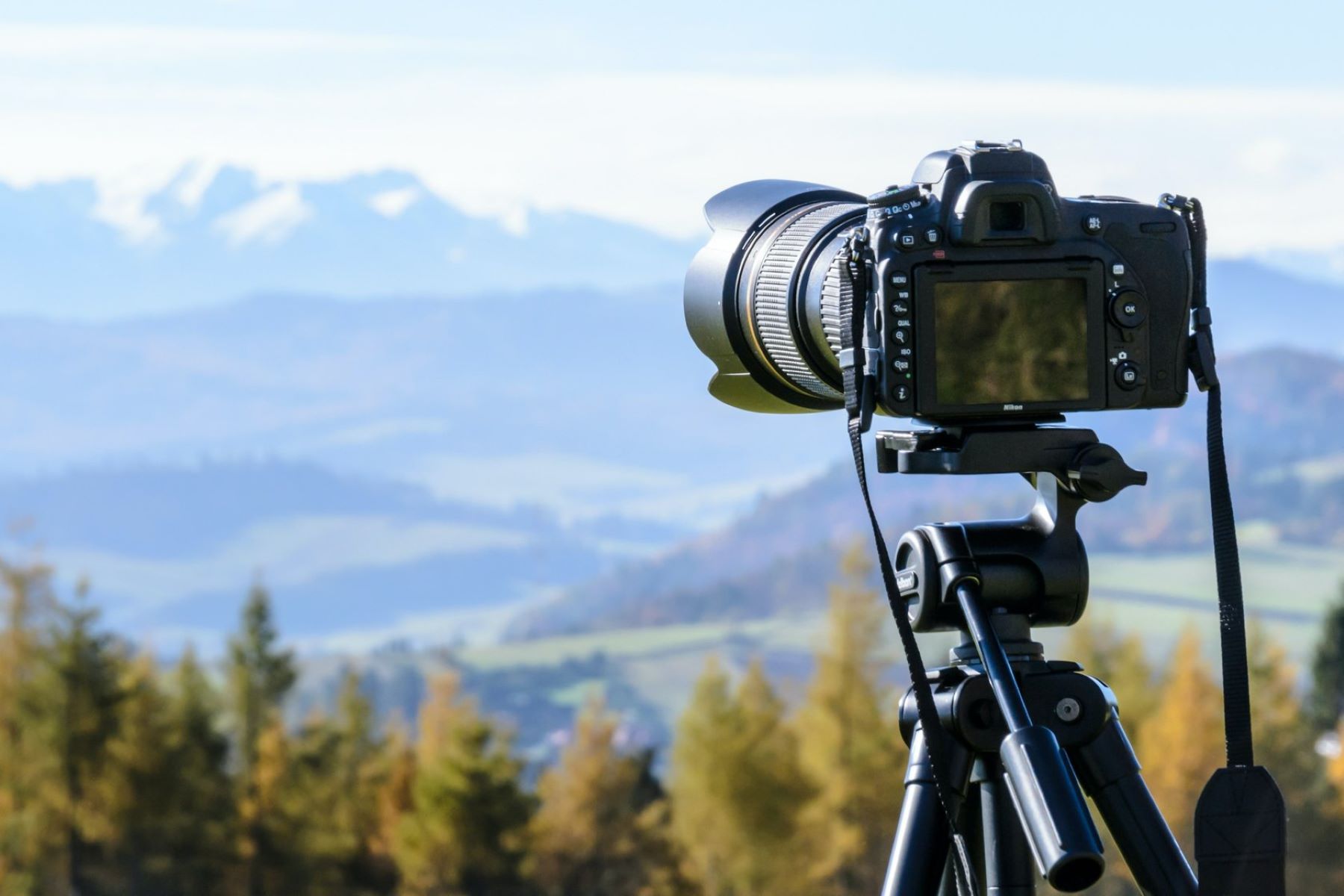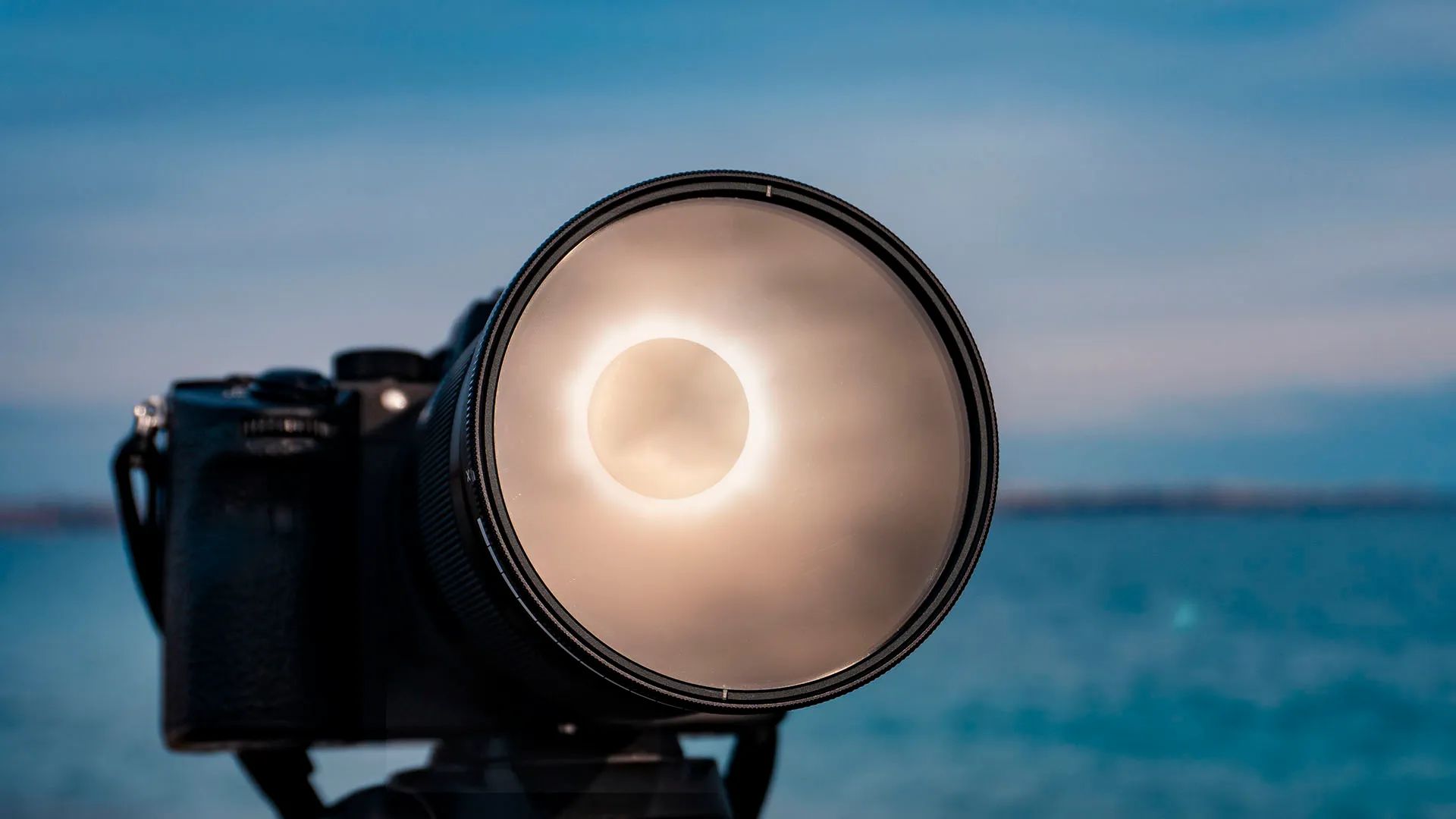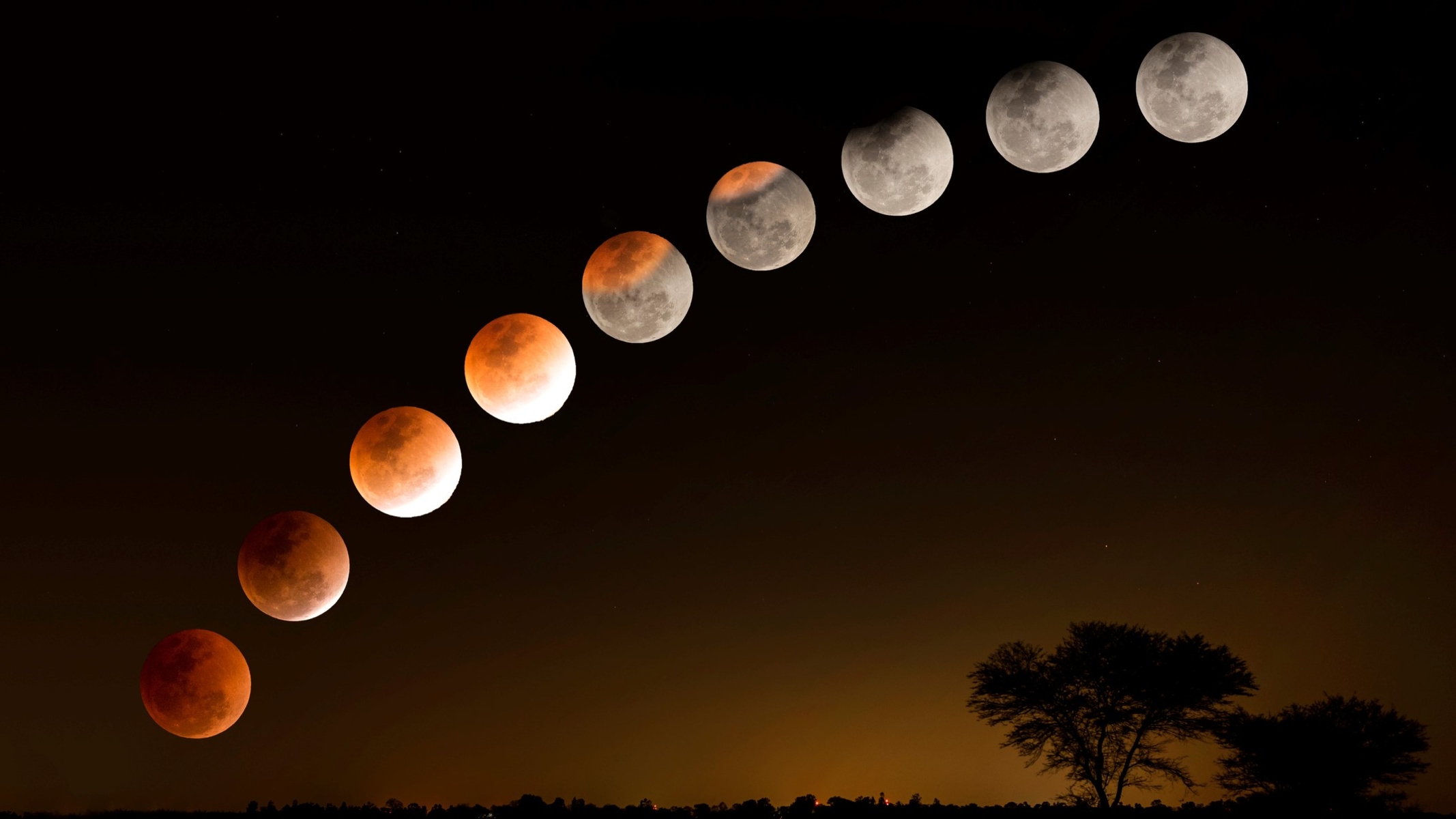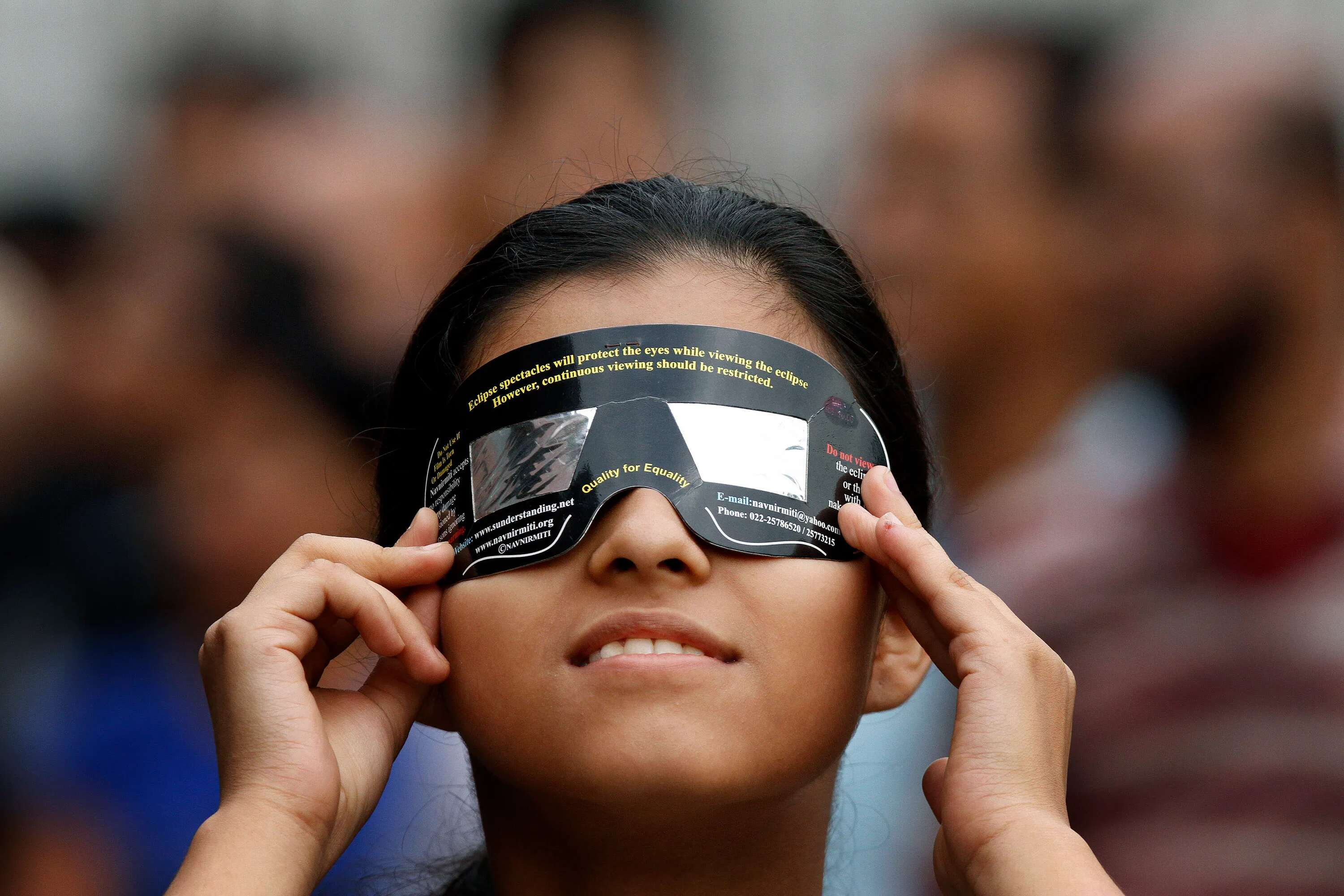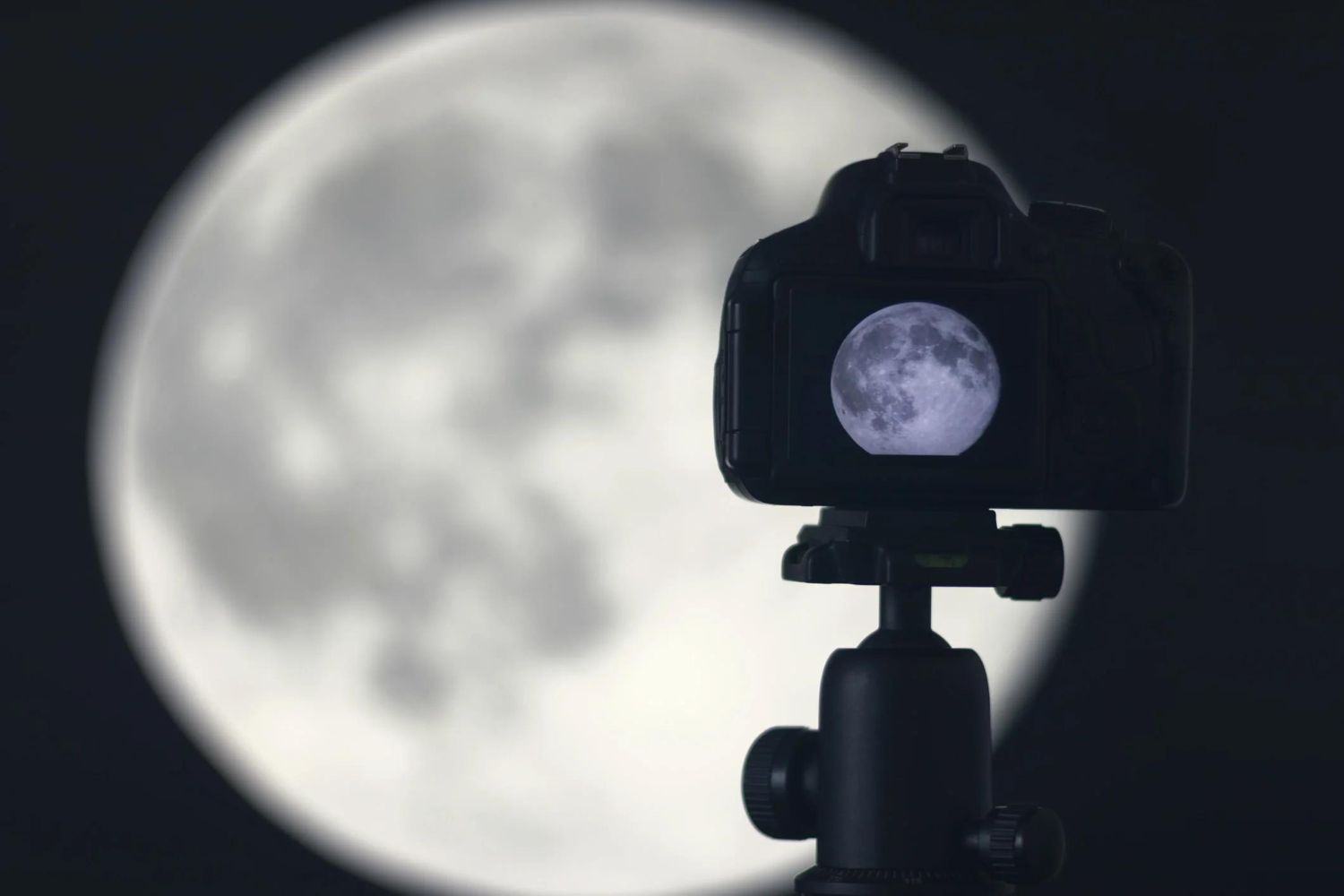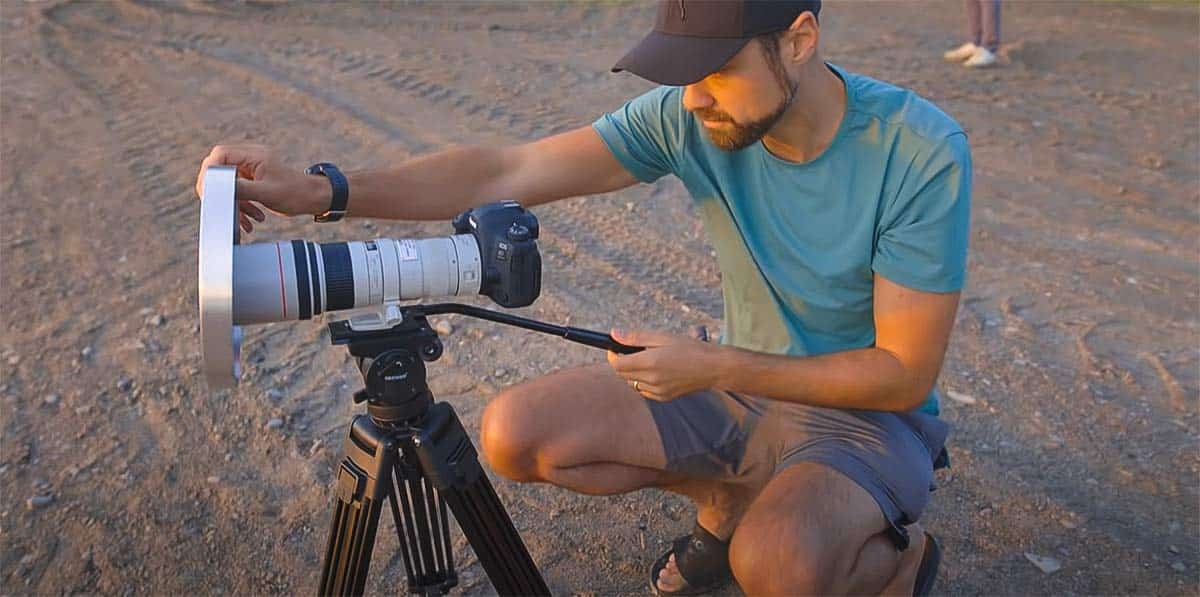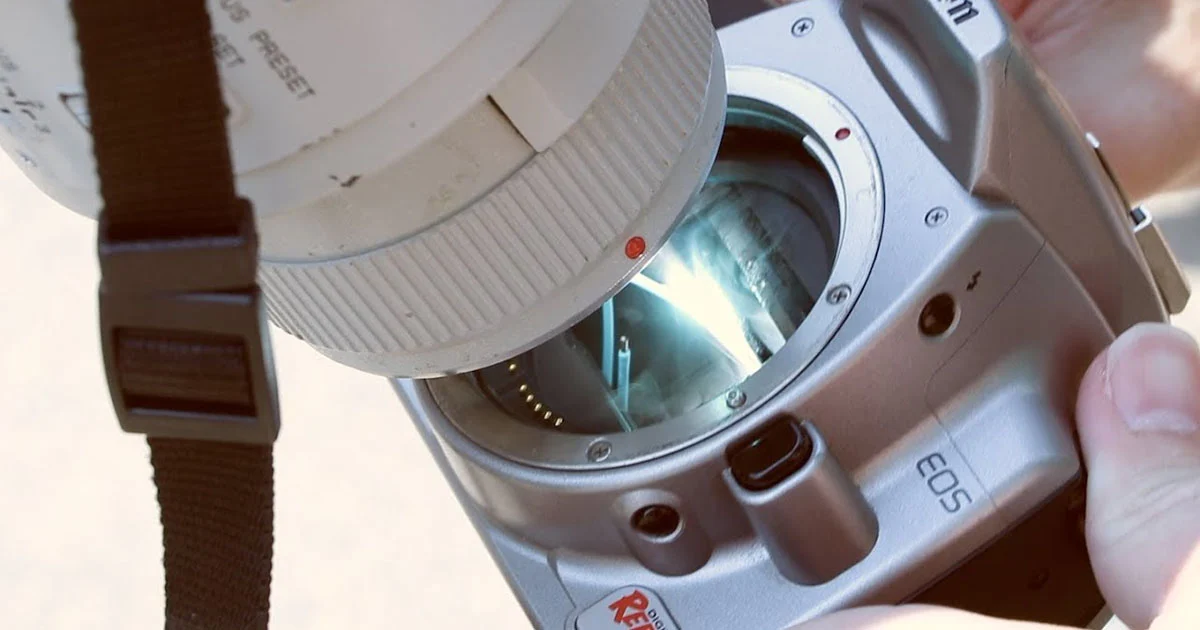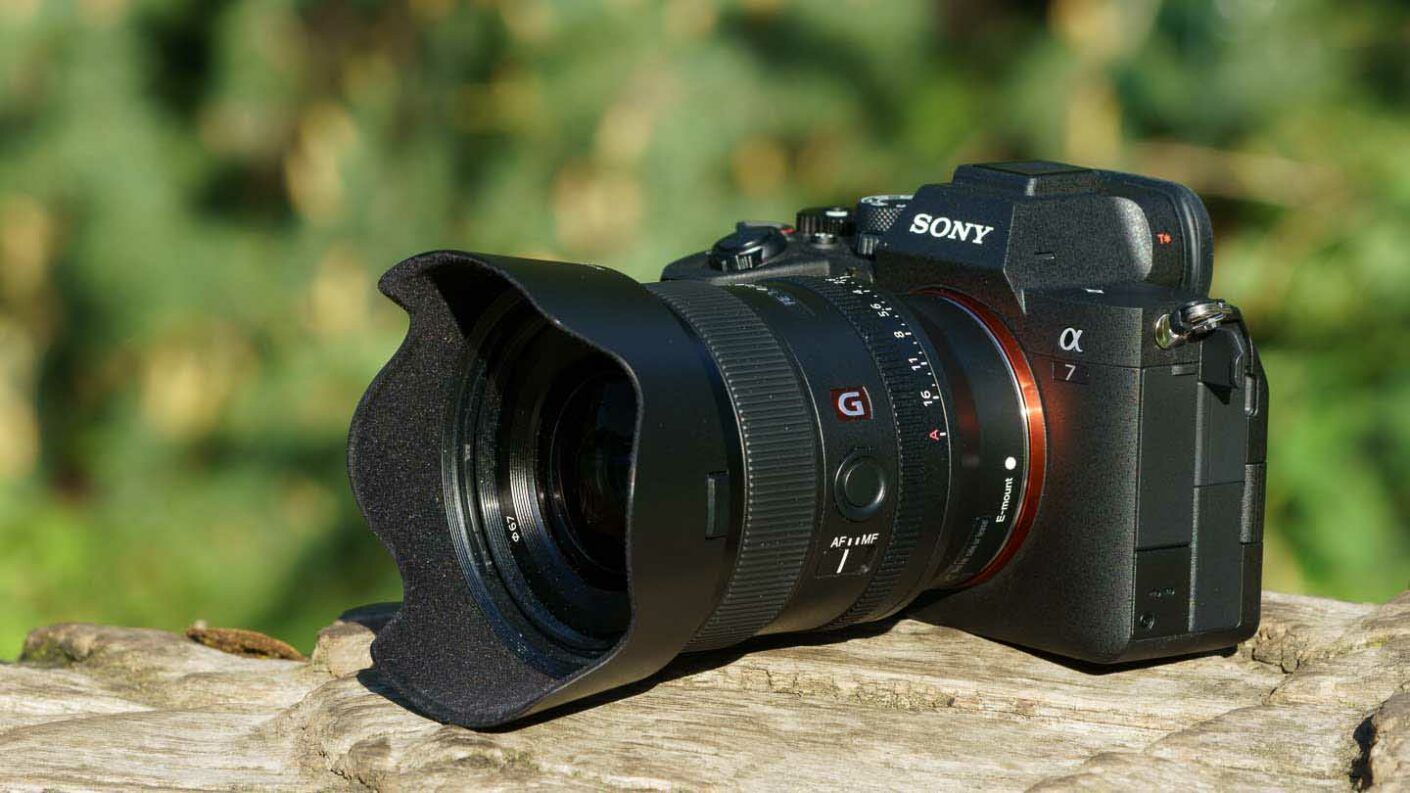Introduction
Photographing a solar eclipse with a DSLR camera is an exhilarating and rewarding experience that requires careful planning, the right equipment, and a solid understanding of the event. The awe-inspiring sight of the moon passing in front of the sun is a rare spectacle that captivates photographers and astronomy enthusiasts alike. In this guide, we will delve into the essential steps and techniques for capturing stunning eclipse photos with your DSLR camera.
As the moon obscures the sun, the world is bathed in an ethereal twilight, and capturing this phenomenon through the lens of a camera allows for the creation of breathtaking images that showcase the beauty of the celestial event. Whether you are a seasoned photographer or an amateur enthusiast, this guide will equip you with the knowledge and skills needed to photograph a solar eclipse with confidence and creativity.
Throughout this guide, we will explore the intricacies of photographing a solar eclipse, from understanding the eclipse itself to selecting the right equipment, planning your shoot, mastering camera settings, and implementing safety precautions. Additionally, we will delve into shooting techniques and post-processing methods that will elevate your eclipse photos to new heights.
Join us as we embark on a journey to unlock the secrets of capturing the awe-inspiring beauty of a solar eclipse with your DSLR camera. Through this guide, you will gain the expertise to immortalize this celestial spectacle in stunning photographs that will leave a lasting impression on all who behold them.
Understanding the Eclipse
Before venturing into the realm of photographing a solar eclipse, it is essential to grasp the fundamental concepts behind this celestial event. A solar eclipse occurs when the moon passes between the sun and the Earth, casting its shadow on the Earth’s surface. This captivating phenomenon unfolds in stages, beginning with the partial eclipse as the moon gradually encroaches upon the sun’s radiant disk, ultimately culminating in a mesmerizing total eclipse, during which the sun is entirely obscured by the moon’s silhouette.
It is crucial to note that viewing a solar eclipse directly with the naked eye can cause irreparable harm to your vision. Therefore, understanding the eclipse involves not only appreciating its visual splendor but also recognizing the importance of safeguarding your eyes and camera equipment. By comprehending the mechanics of a solar eclipse and the precautions necessary to observe it safely, you can approach the photography process with confidence and mindfulness.
The alignment of the sun, moon, and Earth during a solar eclipse creates a surreal spectacle that captivates onlookers and presents a unique opportunity for photographers to capture the celestial ballet in a series of compelling images. By understanding the intricacies of the eclipse, including its phases and the behavior of light during the event, you can prepare yourself to skillfully document this extraordinary display of cosmic choreography with your DSLR camera.
With a solid grasp of the eclipse’s mechanics and the visual spectacle it presents, you are poised to embark on a journey to immortalize this celestial event through the art of photography. Armed with this knowledge, you will be well-equipped to move forward in selecting the right equipment and planning your shoot to capture the eclipse in all its splendor.
Choosing the Right Equipment
When preparing to photograph a solar eclipse with a DSLR camera, selecting the appropriate equipment is paramount to achieving exceptional results. The primary component of your gear ensemble is, naturally, the DSLR camera itself. Opt for a camera with manual settings that allow for precise control over exposure, focus, and shutter speed. Additionally, a sturdy tripod is indispensable for maintaining stability and minimizing camera shake during the shoot.
Equally crucial is the selection of a high-quality telephoto lens with a focal length suitable for capturing the eclipse in detail. A telephoto lens with a focal length of at least 300mm is recommended to magnify the celestial spectacle and frame the eclipse prominently within the composition. Furthermore, investing in solar filters designed specifically for camera lenses is essential for safeguarding both your eyes and your camera’s sensor from the sun’s intense rays.
It is imperative to verify the compatibility of the solar filter with your lens diameter to ensure a secure and effective fit. Additionally, consider acquiring spare camera batteries and memory cards to mitigate the risk of running out of power or storage space during the eclipse. A remote shutter release or intervalometer can also be advantageous for minimizing camera shake and capturing the eclipse with precision.
Moreover, packing essential accessories such as lens cleaning tools, a lens hood to prevent lens flare, and a portable shade or tent for shielding your camera’s LCD screen from direct sunlight will contribute to a seamless and productive photography experience. By assembling a comprehensive array of equipment tailored to the demands of photographing a solar eclipse, you will be well-prepared to capture this celestial spectacle with confidence and finesse.
Planning Your Shoot
Effective planning is the cornerstone of a successful eclipse photography endeavor. Before the celestial event unfolds, meticulous preparation is essential to ensure that you are well-positioned to capture the eclipse in all its splendor. Begin by researching the precise timing and duration of the eclipse at your location. Numerous online resources and mobile applications provide detailed information about the eclipse’s path, allowing you to pinpoint the optimal vantage point for your shoot.
Scouting potential locations in advance enables you to identify unobstructed viewpoints with captivating foreground elements, such as landmarks or natural features, to enhance the visual impact of your eclipse photos. Consider factors such as elevation, atmospheric conditions, and potential obstructions, and strive to secure a vantage point that offers a clear and expansive view of the sky.
Furthermore, familiarize yourself with the trajectory of the eclipse and anticipate the direction from which it will unfold. This knowledge will empower you to plan your compositions and visualize the positioning of the sun and moon in the frame, enabling you to pre-visualize your shots and optimize your camera setup accordingly.
Weather conditions play a pivotal role in eclipse photography, as cloud cover can obstruct the view and diminish the clarity of your images. Stay abreast of weather forecasts leading up to the eclipse, and have contingency plans in place should inclement weather pose a threat to your primary shooting location. Flexibility and adaptability are key attributes of successful eclipse photographers, allowing you to adjust your plans and relocate if necessary to optimize your chances of capturing the eclipse.
By meticulously planning your shoot, familiarizing yourself with the eclipse’s trajectory, and selecting an optimal vantage point, you will set the stage for a productive and rewarding photography experience. With thorough preparation, you can approach the eclipse with confidence, ready to translate its awe-inspiring beauty into a stunning visual narrative through the lens of your DSLR camera.
Camera Settings for the Eclipse
Mastering the intricacies of camera settings is paramount to capturing the ethereal beauty of a solar eclipse with your DSLR camera. As the celestial spectacle unfolds, implementing the appropriate settings will allow you to achieve optimal exposure, sharpness, and clarity in your eclipse photos. Prior to the eclipse, familiarize yourself with your camera’s manual controls, as the unique lighting conditions of the event necessitate adjustments to your typical shooting parameters.
First and foremost, set your camera to manual mode to exert full control over exposure settings. Begin by selecting the lowest native ISO setting to minimize digital noise and maximize image quality. As the eclipse progresses, the intensity of sunlight will diminish, prompting the need to adjust the ISO and shutter speed accordingly to maintain proper exposure.
When composing your shots, consider utilizing a narrow aperture, such as f/8 to f/11, to ensure a deep depth of field and sharpness throughout the frame. This approach is particularly advantageous when incorporating landscape elements or foreground subjects into your eclipse compositions, enhancing the overall visual impact of your photos.
Given the dynamic nature of a solar eclipse, it is essential to continuously monitor and adjust your camera settings throughout the event. As the moon encroaches upon the sun during the partial phases, the diminishing light may necessitate gradual adjustments to your exposure settings to maintain proper exposure and detail in your images.
During the fleeting moments of totality, when the sun is entirely obscured by the moon, swift adjustments to your camera settings are imperative to capture the delicate corona and the ethereal hues of the solar atmosphere. Employ shorter exposure times and consider bracketing your shots to ensure that you capture the full range of luminance and detail present in this rare and awe-inspiring phase of the eclipse.
By mastering the art of camera settings for eclipse photography, you will be poised to adapt to the evolving lighting conditions and capture the nuanced beauty of each phase with precision and artistry. With a keen understanding of your camera’s manual controls and the principles of exposure, you can harness the transformative power of a solar eclipse to create captivating and evocative images that resonate with viewers.
Safety Precautions
When photographing a solar eclipse, prioritizing safety is paramount to safeguarding both yourself and your equipment from the inherent risks associated with capturing the sun and its corona. Directly viewing the sun without adequate protection can result in permanent eye damage, and the intense solar radiation can also pose a threat to your camera’s sensor and internal components. By adhering to essential safety precautions, you can mitigate these risks and ensure a secure and enjoyable photography experience.
One of the most critical safety measures when photographing a solar eclipse is to never look directly at the sun through your camera’s viewfinder or without certified solar viewing glasses. These specialized glasses are designed to filter out harmful ultraviolet and infrared radiation, allowing for safe observation of the sun’s disc without risking eye damage. Prior to the eclipse, procure ISO-certified solar viewing glasses from reputable vendors to protect your vision during the event.
Furthermore, when attaching a solar filter to your camera lens to capture the eclipse, verify that the filter is specifically designed for solar observation and photography. Solar filters serve as a crucial barrier against the sun’s intense light and heat, shielding your camera’s sensor and optics from potential damage. Exercise caution and diligence when affixing the solar filter to your lens, ensuring a secure and snug fit to prevent light leakage and maintain effective protection.
Throughout the eclipse, remain vigilant in monitoring the condition of your solar filter and viewing glasses, as any signs of damage or wear may compromise their protective capabilities. Inspect the integrity of the solar filter and glasses regularly, and refrain from using them if they exhibit any defects or degradation that could compromise their efficacy.
Additionally, be mindful of the ambient temperature during the eclipse, as prolonged exposure to direct sunlight can elevate the temperature of your camera and lens. To prevent overheating, seek shaded areas or utilize portable shade accessories to shield your equipment from excessive heat and minimize the risk of thermal damage.
By conscientiously adhering to safety precautions and equipping yourself with certified solar viewing glasses and reliable solar filters, you can embark on your eclipse photography venture with confidence and peace of mind. Prioritizing safety not only protects your well-being and equipment but also allows you to fully immerse yourself in the transformative experience of capturing the celestial ballet of a solar eclipse through the lens of your DSLR camera.
Shooting Techniques
Mastering the art of eclipse photography entails employing a range of shooting techniques to capture the celestial spectacle with precision and artistry. As the moon traverses the sun’s radiant disk, implementing strategic shooting methods will enable you to immortalize the nuanced beauty of each phase, from the partial eclipse to the ethereal moments of totality.
One fundamental technique for eclipse photography is the use of bracketing to capture a series of exposures at varying settings. Bracketing allows you to preserve detail in both the sun’s corona and the surrounding landscape, ensuring that you capture the full dynamic range of luminance present during the eclipse. By bracketing your shots, you can later merge the exposures in post-processing to create a composite image that faithfully conveys the awe-inspiring grandeur of the eclipse.
Another valuable technique is the utilization of a telephoto lens to magnify the eclipse and frame it prominently within the composition. Experiment with different focal lengths and compositions, incorporating foreground elements or silhouettes to add depth and visual interest to your eclipse photos. By juxtaposing the celestial event against recognizable landmarks or natural scenery, you can imbue your images with a sense of scale and narrative depth, elevating the visual impact of the eclipse.
During the fleeting moments of totality, when the sun is entirely obscured by the moon, embrace the opportunity to capture the delicate corona and the ephemeral hues of the solar atmosphere. Employ shorter exposure times and adjust your camera settings swiftly to preserve the intricate details and ethereal beauty of this rare and captivating phase of the eclipse.
Furthermore, consider experimenting with time-lapse photography to document the gradual progression of the eclipse. Time-lapse sequences offer a mesmerizing visual narrative of the event, showcasing the moon’s elegant dance across the sun’s radiant face and the transformative interplay of light and shadow as the eclipse unfolds.
Embracing a diverse array of shooting techniques, from bracketing and telephoto composition to time-lapse photography, empowers you to capture the multifaceted beauty of a solar eclipse with creativity and finesse. By harnessing these techniques, you can craft a compelling visual narrative that conveys the profound spectacle and transformative power of the celestial event, leaving a lasting impression on viewers.
Post-Processing Your Eclipse Photos
Following the exhilarating experience of photographing a solar eclipse with your DSLR camera, the post-processing phase presents an opportunity to refine and enhance your eclipse photos, elevating them to new levels of visual splendor. By leveraging post-processing techniques, you can fine-tune the exposure, contrast, and color balance of your images, ensuring that they faithfully convey the ethereal beauty of the celestial event.
Upon importing your eclipse photos into post-processing software, begin by assessing the overall exposure and contrast of each image. Adjust the tonal range and contrast to optimize the visual impact of the eclipse, striking a balance between preserving detail in the sun’s corona and enhancing the surrounding landscape or foreground elements.
Additionally, consider employing selective sharpening and noise reduction to refine the clarity and detail of your eclipse photos. By selectively sharpening the intricate features of the sun’s corona and mitigating digital noise, you can enhance the overall sharpness and visual fidelity of your images, ensuring that they resonate with viewers on a profound and immersive level.
Color balance and saturation play a pivotal role in post-processing eclipse photos, as they influence the vibrancy and emotive resonance of the images. Fine-tune the color temperature and saturation to evoke the nuanced hues of the solar atmosphere and the ambient light during the eclipse, imbuing your photos with a captivating and evocative visual quality.
Moreover, consider merging bracketed exposures to create composite images that faithfully convey the full dynamic range of luminance present during the eclipse. By blending multiple exposures in post-processing, you can craft a seamless and immersive visual narrative that encapsulates the transformative beauty of the celestial event in a single, compelling image.
Throughout the post-processing journey, strive to maintain a balance between enhancing the visual impact of your eclipse photos and preserving the authenticity and integrity of the celestial spectacle. By approaching post-processing with a discerning eye and a commitment to artistic expression, you can refine your eclipse photos into captivating visual narratives that resonate with viewers and evoke the profound splendor of the solar eclipse.







